NEW AFRICA DEFENCE FORCE: 2300AD
The Royal New African Air Force
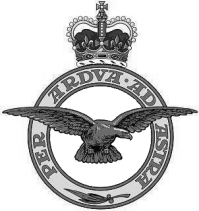
Order of Battle
Introduction
The RNAAF is New Africa's air combat component. The RNAAF gave excellent service during the Invasion, primarily in the tactical movement of troops, thanks to the service taking over much of the colony's civilian aviation. The RNAAF is rebuilding to include an expanded air superiority capability, but while it rebuilds many of its flight crews are commonwealth personnel serving on secondment. It is the second largest service behind the Army.
Narrative
The remnants of 3d Platoon hunkered down on the high ground, Bug small arms fire was whipping in around them. Occasionally a marine would see a target and dispatch it with a well aimed burst of 9mm APHE or a grenade. The situation was getting desperate, most of the Franco-American force had been evacuated and the perimeter had collapsed. Isolated posts like 3 Platoon's were still holding out, but they had no mortar support now and comms with company and battalion were down. The sergeant in charge gritted his teeth. He'd be damned if he'd let the Kafers take him or his men alive.
Then the forward slope erupted with a stream of firecracker explosions that nearly blew the marines from the crest and almost deafened them into the bargain. As the noise slowly faded the sound of alien screaming could just be heard over the ringing of abused ears. The RTO started tugging on the sergeant's sleeve and pointed down into the valley behind them, mouthing expletives.
A bright orange tiltwing was powering rapidly up the slope towards them, engines already in the transition, flares and chaff pumping from its flanks. It passed over the sergeant, clearing him by a bare metre, battering him into the ground with downdraft and red hot engine efflux. The undercarriage barely touched and he was up and running, dragging the RTO towards the tiltwing with its 'Air Zip Courier' markings. A loadmaster was sprawled on the rear ramp behind a thudding 12mm HMG, whilst another was frantically waving the troops on. Marines were already piling in either side of him, dragging the wounded with them.
The sergeant ran
to the loadmaster and shouted into his face. 'We've got dead marines here,
we need to get the bodies!'
'No time!'
He shouted back, heaving the sergeant into the cargo bay. The tiltwing
was already moving, pivoting and diving back down the rear slope into
the valley. Kafer tracers rose up after it and 12mm autofire slashed back,
empty shell casings cascaded into the bay. A wounded marine grunted as
he took a hit from a round that came in over the ramp whilst the tiltwing
rapidly accelerated into the valley.
Some of the marines slumped in relief, but the sergeant knew they weren't out of the woods yet. There was a long way to go to the ships standing off the French Continent.
History
Order of Battle
No.1 New
African Tactical Air Group
No.2 Tactical
Air Manoeuvre Group
No.3 Air Control
Support Group
No.4 Air Supply
Group (Reserve)
No.5 Tactical
Air Manoeuvre Group (Reserve)
Flight Training
Wing
Ground Combat Wing
Squadrons
Aircraft
The RNAAF was formed in 2285 to build up a air support capability for the NADF and British Garrison separate to the RAF, which was consolidating its resources on Earth in response to increasing tension there. The RNAAF was built up from former RAF resources as well as transferred RAF personnel and as such the new service has inherited most of the traditions and insignia of its parent.
The main combat power of the RNAAF were the two squadrons of VF Hunter FGR.5s inherited from the RAF. These were robust, multi-role fighters which were slowly heading towards obsolescence though still functional as ground attack craft. The outclassing of these two squadrons in the face of more modern French and German aircraft which arrived on Beta Canum following the Reunification War became a matter of concern to the NADF. The RNAAF was also responsible for providing long range maritime search and rescue and reconnaissance for which it had a small squadron of converted Atlas transport aircraft.
Tactical airlift was provided by two squadrons of ageing Whirlwind tilt-rotors transferred from the local Army Air Corps squadrons. These squadrons were to operate alongside the NADF ground units, especially 1 New Africa Light Brigade and the British 6th Airborne Brigade. They were also available for aid to the civil power tasks. Supplementing this was the Air Force Reserve, two squadrons of civilian tilt-rotors belonging to small airline and courier services, and a squadron of Loadmaster IIIs from a similar source.
When the Invasion hit the French Arm the New African Government made preparations for the call up of the Air Force Reserve and its expansion using civil aviation resources. Many civil pilots were signed up for a brief period of military orientation. The air defences of New Africa were greatly improved with the arrival on-world of the British Joint Tactical Air Group-2 with its modern aircraft and ability to operate from the field. The operations of No.1 and No.2 Squadrons of the RNAAF were integrated into JTAG-2, giving it no fewer than four ground attack squadrons.
When the Kafers assaulted New Africa 1 and 2 Sqns were involved in airstrikes on the landing zones and then provided close air support for 79 Armoured Brigade as it fought the Kafers to a stand still. The ageing Hunters proved their worth alongside the modern Tempests flown by the British, but attrition began to tell and the sortie rates dropped. They increasingly operated from dispersed airstrips and were flown only in support of major efforts.
The RNAAF's tactical airlift squadrons, immediately reinforced by the Reserve and civilian aircraft, were much more heavily involved throughout the conflict, moving the troops of the 1st Light Division around the theatre. They were also involved in the many raids conducted by Combined Operations and in support of German and French operations. Although lacking the glamour of JTAG-2 strike operations these were of invaluable importance to the resistance. These airlift squadrons were comprised of a mixture of pre-war regulars and reservists, civilian volunteers as well as French and German exiles.
The 3rd Liberation saw the combat squadrons at very low strengths following operations in the German Continent, whilst the airlift squadrons were still going strong. A reorganisation was put into place to regenerate the combat strength of the RNAAF whilst Commonwealth reinforcements of JTAGs 3,4 and W took over defence duties. The RNAAF's main roles would remain in supply and transport of ground forces.
The RNAAF is organised into Groups for combat, each containing a number of Squadrons. Groups can contain regular as well as reserve squadrons. The RNAAF also has specialist wings for training and protection of squadrons on the ground, these are integrated into the Groups for operational purposes. Many of the squadrons have large numbers of seconded flight crews brought in whilst the RNAAF rebuilds, however most of the ground crews are found by the RNAAF.
No.1 New African Tactical Air Group
2 Squadron
(Fury F.1A)
12 Squadron (Fury F.1A)
1 Squadron (Tempest GR.1)
11 Squadron (Tempest GR.1)
No.1 Group is based on the structure of the JTAG used by Britain and Wellon on New Africa and is known as NATAG. It holds all of New Africa's combat air power and is designed to operate alongside other JTAGs or on its own. Since its formation it has been exercising in air superiority and orbital interdiction operations, however the ground attack squadrons have been operating over the K-Zone at the same time providing CAS.
No.2 Tactical Air Manoeuvre Group
4 Squadron
(Wyvern TC.3)
5 Squadron (Wyvern TC.3)
6 (Reserve) Squadron (Wyvern TC.1)
8 (Reserve) Squadron (Loadmaster III)
No.2 Group contains the bulk of New Africa's tactical airlift utilising tilt-rotors and with a squadron of rough-strip capable Loadmasters in support. 2 Group is immensely experienced in its role and has a reputation for getting its job done no matter what. No.2 Group is currently concentrating on operations in the K-Zone, supporting V Corps. 2 Group is highly mobile and is currently operating from extemporised facilities inside and outside of the K-Zone.
No.3 Air Control Support Group
3 Squadron
(Guardian AEW.1)
17 Squadron (Victor AAR Drone)
18 Squadron (Vulcan AEW Drone)
3 Group is a recently rebuilt formation and a quantum leap in the capability of the RNAAF. It is comprised of a small squadron of Guardian AEWs and two squadrons of drones for air to air refuelling and airborne early warning tasks. These assets support NATAG as well as the JTAGs and provide a capability for air information superiority. No.3 Group is manned almost largely by seconded Commonwealth personnel, whilst native RNAAF personnel have been sent to Earth for training on this equipment.
No.4 Air Supply Group (Reserve)
9 Squadron
(Loadmaster III)
10 (Reserve) Squadron (Atlas C.3)
16 (Reserve) Squadron (Lincoln CT.3)
4 Group is responsible for the resupply of NADF units as well as the large scale movement of troops. The Group is classed as a reserve one as most of its pilots are from the Air Force Reserve, however it carries out a large number of operational taskings by rotating its pilots through active duty. 9 Sqn is a regular unit and fully tasked to K-Zone operations.
No.5 Tactical Air Manoeuvre Group (Reserve)
20 Squadron
(Wyvern TC.3)
14 (Reserve) Squadron (various tiltwing)
19 (Reserve) Squadron (Whirlwind TC.8)
13 (Reserve) Squadron (Atlas C.3)
5 Group is the reserve counterpart to 2 Group. Most of its units are Air Force Reserve whose aircraft see day-to-day duty on civilian contracts and lack military markings. 20 Sqn is a regular squadron tasked with littoral and SAR duties and is dispersed in three locations around the coast.
Flight Training
Squadron
7 (Reserve) Squadron (Wyvern
TC.1)
15 (Reserve) Squadron (Hunter
FGR.5)
The FTW's role is to provide trained pilots to the RNAAF. These potential flight crews are both regulars and conscripts, although some regular recruits have been sent to Alicia and Earth for training. Basic flight training is conducted by the Flight Training Squadron, the pilots are then streamed into fixed wing and rotary operations. Once through basic flight training they are then moved onto Operational Conversion Units, either with 7 Sqn, 15 Sqn or with a reserve supply squadron. Crew going on to more advanced types must go for training on Alicia or back in the Core, these are usually already qualified Hunter or Wyvern crew. In times of emergency 7 and 15 Sqns would reinforce 2 and 1 Gps respectively.
Wing HQ and Depot
A Squadron
B Squadron
C Squadron
Prior to the Invasion the RNAAF had no equivalent to the RAF Regiment, intending to use spare companies of the New Africa Regiment. This didn't come to pass and in the end they relied on JTAG-2's overstretched RAF Regt Defence Group and New African volunteers. The GCW has been formed from seconded RAF Regt and NAR personnel together with a high standard of conscript. A Sqn has mixed field and anti-aircraft functions and supports 1 Group, B Sqn is similarly organised in support of 2 Gp. C Sqn is smaller and is training in the CSAR role with the support of a USAF training team.
1 Squadron
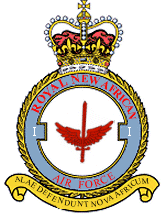
1 Sqn is the oldest combat squadron in the RNAAF and has always been a ground attack unit. It flew Hunters during the Invasion, specialising in close air support and suffered commensurate casualties. It has since converted to the modern Tempest and retains a kernel of combat veterans along with replacement New African pilots. It is part of the NATAG. It has been flying CAS sorties over the K-Zone.
2 Squadron
2 Sqn is another of the original units, formed at the creation of the RNAAF. It flew Hunters during the Invasion and took heavy casualties, eventually the remaining Hunters were handed over to 1 Sqn and the crews used to fill gaps in other units. The Sqn was reactivated after the Liberation to fly the Fury, half the pilots came from the RNAAF and the other half were seconded from the RAF. 2 Sqn is now well trained on its new aircraft and is a well integrated unit. The squadron is assigned to the NATAG.
3 Squadron
Pre-war this unit flew a number of converted Atlas MR.1 in the maritime surveillance role. During the war they operated with mixed success in the ground reconnaissance role and were sometimes called on to provide troop lift. Today the squadron has converted to the ultra-modern Guardian AEW aircraft. Except for the pilots most of the original flight crew have been sent to Earth to undergo systems training. They have been temporarily replaced by RAF flight crew, many veterans from 8 Sqn which provided JTAG-2's AEW cover. 3 Sqn is a the key component of No.3 Group.
4 Squadron
Another pre-war regular squadron, 4 Sqn was tasked with coastal search and rescue operations although it was also capable of troop lift tasks. During the war the squadron operated in support of special forces and commandos, and suffered comparatively low casualties. It has retained most of its wartime crews, although some have been posted out to other squadrons and has been reinforced with British Army Air Corps pilots and some newly trained RNAAF pilots. 4 Sqn has re-equipped with modern Wyvern C.3's and is assigned to No.2 Group and flies in support of ground forces operating in the K-Zone. It retains the capacity to fly covert insertions of special forces and has been working alongside C Sqn of the GCW to develop a CSAR capability.
5 Squadron
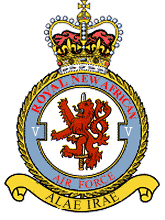
The youngest of the pre-war regular units, 5 Sqn was assigned to support the New Africa Light Brigade a task it also undertook in the war. Always in the front-line 5 Sqn took heavy casualties but managed to continue operations until the final Liberation. It has been rebuilt with new Wyvern tilt-rotors and a contingent of pilots from Wellon, Australia and New Zealand. Newly trained RNAAF flight crews are just beginning to join the squadron. 5 Sqn operates with 2 Gp and is a highly efficient unit.
6 (Reserve) Squadron
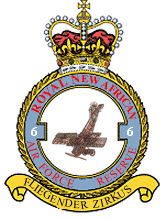
Perhaps the most famous squadron in the RNAAF, 6 Sqn has the nickname 'flying circus'. A pre-war Air Force Reserve tiltwing squadron its pilots and aircraft flew for private courier companies, its tiltwing aircraft were a variety of models and colours and its pilots a similar diverse bunch. When mobilised there was initially no time to repaint the aircraft and they operated in a range of day-glow colours. Combined with the flamboyance of the pilots, the reputation of the squadron was assured. Today they fly second hand Wyverns in more sober camouflage, although every air frame has an section painted an outlandish colour. It is still a reserve squadron, if one on high readiness, whose pilots come from the same source as before the war. Indeed most of the flight crew are wartime veterans of the squadron.
7 (Reserve) Squadron
7 Sqn has the same roots as 6 Sqn, although its planes and crews came from government rather than private couriers. It also had a distinguished wartime reputation based more on efficiency rather than flamboyance. Since then it's role has been changed to that of an Operation Conversion Unit, training pilots to handle tilt-rotors in a tactical environment. Its instructors are a mix of experienced New Africans and Commonwealth pilots, whilst its pupils include both regular and conscript recruits. In time of war 7 Sqn would reinforce No.2 Group.
8 (Reserve) Squadron
A pre-war Air Force Reserve unit, 8 Sqn flew a mixture of Loadmaster class aircraft. During the war it flew an array of missions; from routine supply runs to night-time paratroop drops over the Southern Continent. It is still equipped with battered wartime Loadmasters, and is manned by a mixture of reserve and newly trained RNAAF pilots, including some conscripts. It is a fairly active squadron, flying in support of the 2 Gp tilt-rotor squadrons in the K-Zone.
9 Squadron
9 Squadron was formed during the war from volunteer pilots and civilian aircraft. It was heavily committed to expeditionary operations and suffered the highest casualties of the airlift squadrons. After the liberation the squadron was re-equipped with new Loadmaster III's donated by America. Its status was regularised and a mixture of British and American crews brought in. Today the proportion of RNAAF crews is slowly rising, although the squadron is still predominantly crewed by seconded personnel. 9 Sqn is the main operational unit of No.4 Group and it is kept busy with supply runs to the large numbers of ground forces present on New Africa..
10 (Reserve) Squadron
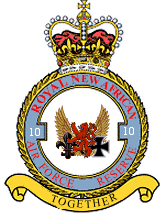
This squadron has similar roots to 9 Sqn except that it was formed with crew and aircraft who had escaped to New Africa from the French and German Continents. Post Liberation many of these returned home or passed to the control of the French or German militaries. The squadron fell into suspended animation until November 2302 when it was re-built with RAF surplus Atlas C.3 transports. It is manned by RNAAF reserve pilots, although its commander is a French wartime member of the squadron. 10 Sqn is part of 4 Gp and provides surge supply capability.
11 Squadron
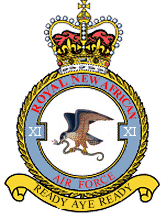
11 Sqn is a post-Liberation regular squadron, formed to supplement 1 Sqn in the ground attack role. It flies the modern VF Tempest and is a part of the NATAG. The Squadron is mainly manned and led by seconded personnel from Canada and the RAF. It has two veteran ex-2 Sqn RNAAF Hunter pilots and is due to receive its first newly trained RNAAF pilots in the next month. It has been flying airstrikes into the K-Zone since its formation.
12 Squadron
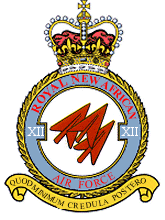
12 Sqn is another post-Liberation squadron which flies the Fury multi-role fighter aircraft. It is entirely composed of seconded RN and RWN Fleet Air Arm pilots, a situation which will not change in the near future as new RNAAF Fury pilots will be assigned to 2 Sqn. 12 Sqn is part of the NATAG.
13 (Reserve) Squadron
This Air Force Reserve squadron was formed after the liberation. It is equipped with surplus Atlas aircraft and manned by reserve pilots and some new conscript flight crews. It is dispersed around New Africa in detachments in peacetime. Many of the reservist pilots are wartime veterans and the squadron is efficient. It is assigned to No.5 Group to supply and supplement the group's tilt-rotors in the field.
14 (Reserve) Squadron
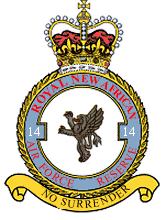
Another post-Liberation reserve squadron, 14 Sqn was formed from the basis of 6 Sqn. Indeed most of the aircraft served with 6 Sqn in the war and have been returned to civilian service. Most of the pilots work for civilian courier firms and many are veterans of 6 Sqn. 14 Sqn is on low readiness status and is assigned to 5 Gp, however it has performed well on exercise.
15 (Reserve) Squadron
15 Sqn is the fast jet Operation Conversion Unit for the RNAAF providing crews for 1 and 11 Sqns of the NATAG. Some graduates from 15 Sqn are streamed to go for Fury conversion and sent to Alicia for further training. The squadron is composed of RNAAF and RAF instructors and takes only regular RNAAF pupils. The squadron flies the surviving Hunters flown in combat by the RNAAF during the Invasion as they are available and need minimal conversion to the Tempest. In times of emergency the squadron would be assigned to the NATAG.
16 (Reserve) Squadron
This is a recently formed Air Force Reserve squadron. It is manned and supported by flight and ground crews from Air New Africa. It flies old Lincoln airliners, converted by the British to be able to handle troop or cargo transport as well as air-to-air refuelling. 16 Sqn is most often used in the troop carrying role and is assigned to No.4 Group.
17 Squadron
17 Sqn is a regular unit formed to maintain and operate Victor air-to-air refuelling drones. These are relatively simple aircraft and the squadron is well practised in their use. It is entirely manned by RNAAF personnel, including a largely conscript ground crew, and is assigned to 3 Group although the Victors fly in support of all of the other groups.
18 Squadron
18 Sqn is 17 Sqns counterpart in 3 Group. It operates Vulcan AEW drones which interface with other air and ground assets, but work most closely with 3 Squadron's Guardians. Vulcans are considerably more complex than the Victors and the squadron has many more regular ground staff than 17 Sqn and still has a number of RAF technicians attached to it.
19 (Reserve) Squadron
When 7 Sqn took on the tilt-rotor OCU role its reserve personnel were transferred into a new squadron. Indeed most of the pilots are 7 Sqn veterans and all are employed by government courier services. The squadron is equipped with obsolete Whirlwinds, survivors of the war which have been cast off by 4 and 5 Sqns when they re-equipped with Wyverns. 19 Sqn is classed as a low readiness unit but as its crews are government employees it is frequently called on for operational commitments. The squadron is assigned to No.5 Group.
20 Squadron
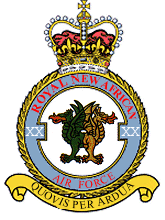
20 Squadron is a regular post-Liberation squadron formed to cover the duties once performed by 4 Squadron. It is dispersed around the coast of New Africa and is tasked with littoral operations and maritime search and rescue, it also works with naval forces. The squadron is equipped with new Wyverns and is manned by a mixture of veteran RNAAF and commonwealth naval pilots. The intention is that 20 Sqn will eventually be manned by RNAAF crews who have already served a tour in a 2 Gp squadron. The squadron has been working with elements of the GCW's C Squadron on maritime CSAR techniques.
Flight Training Squadron
The FTS is based on the pre-War Flight Training School. It is equipped with a number of single and multi-engined aircraft and small tiltwings. Its role is to train pilots in basic flight skills and it has nearly been overwhelmed with the numbers of students and may be expanded. During the war the FTS operated in a liaison role, something it may repeat in the case of a future emergency.
The RNAAF operates a wide array of aircraft, some modern and some obsolete. Most have been donated or provided at knock-down prices by allies.
Fury
The Mitchell Aerospace Fury is Britain's premier multi-role fighter aircraft which proved their worth in the hand of JTAG-2 above New Africa. Two squadrons of Furies have been provided to the RNAAF. These are Fury F.1A variants taken from RAF war replenishment stocks.
Type:
Multi-Role supersonic fighter
Crew: Pilot
Weight: 8000kg
Armour: All faces
5
Armament: Integral
laser system, various ordnance hardpoints
Evasion: 21
Sensor Range: 550km
(+4)
Signature: -5 (-4/-2)
Max Speed: 2000
kph
Cruising Speed:
1600 kph
Combat Movement:
4000m
Endurance: 4 Hours
(6/8)
Price: Lv4,500,000
Tempest
The Vickers-Foss Tempest is the main British dedicated ground attack aircraft. It is an evolutionary development of the venerable Hunter and conversion between the two types is simple. Two squadrons of Tempest GR.1 have been provided to the RNAAF, these are airframes that served with JTAG-2 during the war.
Type:
Vectored Thrust VSTOL fighter bomber
Crew: Pilot
Weight: 8000kg
Armour: All faces
5
Armament: 1 25mm
cannon, 8 hardpoints
Evasion: 21
Sensor Range: 450km
(+3)
Signature: -4
Max Speed: 1500
kph
Cruising Speed:
1000 kph
Combat Movement:
3000m
Endurance: 5 Hours
Price: Lv4,000,000
Hunter
The Vickers-Foss Hunter FGR.5 is a now obsolete tactical strike aircraft which can still provide good service in the colonies. It was the main combat aircraft of the RNAAF in the war, but is now relegated to a training role.
Type:
Vectored Thrust VSTOL fighter bomber
Crew: Pilot
Weight: 8000kg
Armour: All faces
4
Armament: 2 25mm
cannon, 4 missile hardpoints, 4 bomb hardpoints
Evasion: 20
Sensor Range: 400km
(+2)
Signature: -2
Max Speed: 1500
kph
Cruising
Speed: 1000 kph
Combat Movement:
3000m
Endurance: 5 Hours
Price:
Lv2,000,000
Guardian
The British Exospace Guardian AEW.1 is a modern airborne early warning and control aircraft. It is used to monitor airspace, control air assets and to command air operations, a job it performed expertly during the first Kafer landings on New Africa. The RNAAF has received 4 of these aircraft, the survivors of JTAG-2's detachment.
Type:
Dedicated AEW and Control Aircraft
Crew: Pilot, Engineer,
5 Tactical controllers
Weight: 16000kg
Armour: All faces
2
Armament: none
Evasion: 16
Sensor Range: 1500km
(+6) (Further when linked to AEW drones or ground stations)
Signature: 0
Max Speed: 1000
kph
Cruising Speed:
900 kph
Combat Movement:
2000m
Endurance: 8 Hours
(Can refuel)
Price: Lv15,000,000
Wyvern
The Vickers-Yeovil Wyvern is a licence produced variant of the French Dragon tilt-rotor. It is a robust, capable craft and a great advance on the old Whirlwind. The RNAAF has received several squadrons of Wyvern TC.1 and TC.3 from the British and Alician governments.
Type:
Tilt-Rotor Utility Light Transport
Crew: Pilot, Co-pilot,
Loadmaster
Weight: 8000kg
Armour: All faces
1
Armament: two missile
hard points, can carry door/ramp guns
Evasion: 14
Sensor Range: 100km
Signature: +1
Max Speed: 600 kph
Cruising Speed:
500 kph
Combat Movement:
1200m
Endurance: 3 Hours
Price: Lv325,000
Whirlwind
The Vickers-Yeovil Whirlwind was the main medium tilt-rotor in British service for many years, however it is now showing its age when compared with the Wyvern that replaced it. It was the main tilt-rotor operated by the regular RNAAF tactical airlift squadrons during the war. The Whirlwind TC.8 now equips only a single reserve squadron.
Type:
Tilt-Rotor Utility Light Transport
Crew: Pilot, Loadmaster
Weight: 7000kg
Armour: All faces
1
Armament: Can carry
door/ramp guns
Evasion: 11
Sensor Range: 50km
Signature: +3
Max Speed: 550 kph
Cruising Speed:
450 kph
Combat Movement:
1100m
Endurance: 3 Hours
Price: Lv225,000
Loadmaster III
The American Loadmaster series have set the standard for rough-strip capable medium capacity airlift for almost a century and the Loadmaster III is the most modern variant. Operated both by governments and private companies the Loadmaster III is robust and reliable. It is operated by two RNAAF squadrons, the aircraft for one were donated by America.
Type:
Heavy Lift Transport Aircraft
Crew: Pilot, Co-pilot,
Engineer, Cargo master.
Weight: 50000kg
Armour: All faces
1
Armament: None
Evasion: 11
Sensor Range: 300km
Signature: +8
Max Speed: 900 kph
Cruising Speed:
800 kph
Combat Movement:
1800m
Endurance: 12 Hours
Price: Lv2,500,000
Atlas
The Vickers-Foss Atlas is the British equivalent of the Loadmaster. Although widely used by British and Commonwealth airforces it never had the export success of the Loadmaster despite roughly similar performance. Two squadrons of surplus Atlas C.3's have been donated to the RNAAF by the British and Wellonese governments.
Type:
Heavy Lift Transport Aircraft
Crew: Pilot, Co-pilot,
Cargo master.
Weight: 45000kg
Armour: All faces
1
Armament: None
Evasion: 11
Sensor Range: 300km
Signature: +7
Max Speed: 900 kph
Cruising Speed:
800 kph
Combat Movement:
1800m
Endurance: 10 Hours
Price: Lv2,750,000
Lincoln
The Lincoln is a mid-60's generation airliner that has been converted for military use. The British use a configuration that can operate either as tankers, troopers or cargo aircraft. A squadron of these Lincoln CT.3 were donated by British airlines to New Africa and converted by the RAF before dispatch.
Type:
Obsolete Converted Airliner
Crew:
Pilot, Co-pilot, Engineer
Weight:
35000kg
Armour: All faces 1
Armament: None
Evasion: 13
Sensor Range: 300km
Signature: +7
Max Speed: 1500 kph
Cruising Speed: 1200 kph
Combat Movement: 3000m
Endurance: 8 Hours
Price: Lv3,000,000
Copyright 2009, D Hebditch